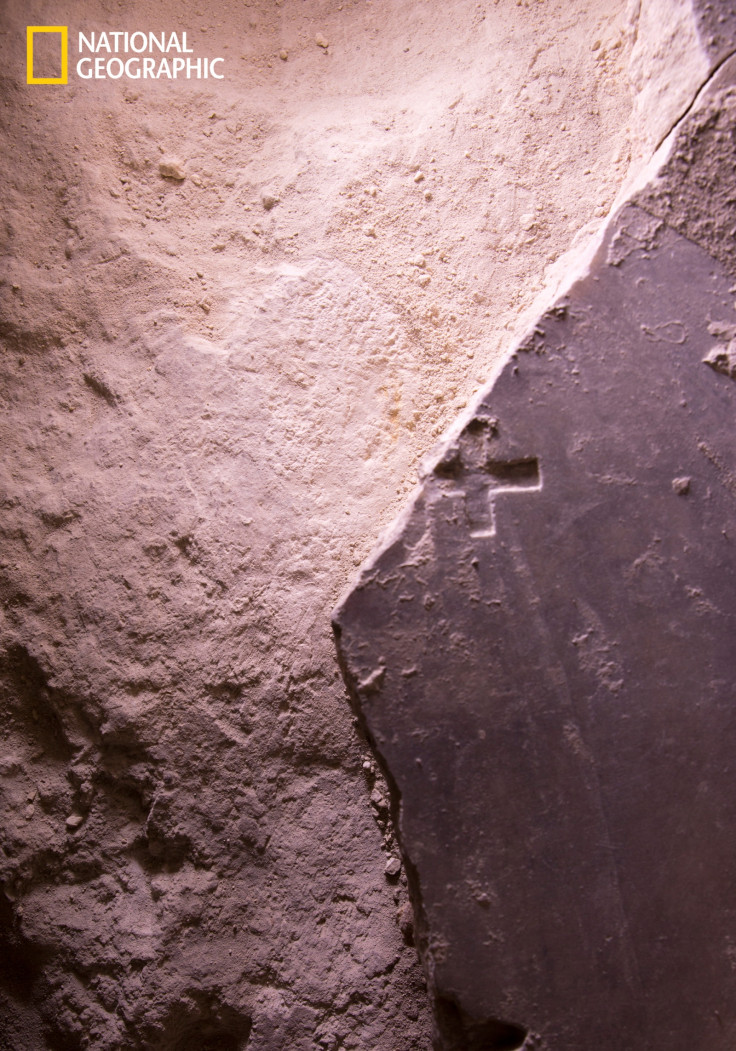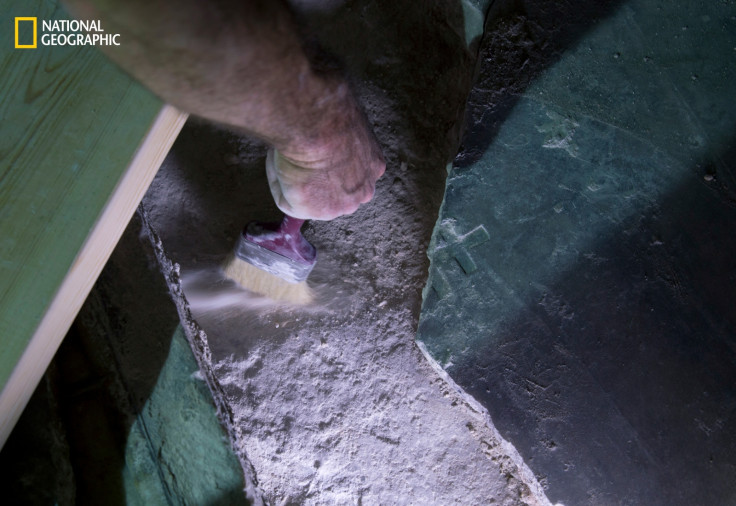Jesus Christ's 'tomb' found to contain limestone burial shelf and an engraved marble slab
Researchers found a cross carved into a layer of marble inside the tomb.
The tomb that is said to be the site where Jesus' body rested after crucifixion has been covered over after a brief but intense period of scientific analysis, according an exclusive by National Geographic.
The burial bed was covered with a layer of marble in order to preserve the limestone from damage. This outer layer was removed on 26 October by researchers from the National Technical University of Athens. Researchers worked around the clock for 60 hours following the removal to investigate the interior of the tomb before it was resealed.
Underneath the outer marble layer the researchers uncovered a second marble slab engraved with a cross sign. Beneath this second layer was the limestone burial shelf, which was found to be intact.
"I'm absolutely amazed. My knees are shaking a little bit because I wasn't expecting this," said Fredrik Hiebert, archaeologist-in-residence at National Geographic. "We can't say 100%, but it appears to be visible proof that the location of the tomb has not shifted through time, something that scientists and historians have wondered for decades."
A structure called an Edicule, which surrounds the tomb, has also been the subject of intense study during its restoration. The Edicule has been found to contain the original limestone cave walls, the researchers say.
"This is the Holy Rock that has been revered for centuries, but only now can actually be seen," says Antonia Moropoulou of the National Technical University of Athens, a specialist in building materials and the preservation of monuments, who is directing restoration of the Edicule. The team has cut a window into the southern interior wall of the Edicule, exposing one of the cave walls.

The site in the Church of the Holy Sepulchre in Jerusalem is traditionally considered to be the tomb in which Christ's body lay, but the evidence is not definitive, says Dan Bahat, who is a former district archaeologist in Jerusalem and in Galilee.
Read more: What did Jesus really look like?
Course of Christianity 'altered by massive exploding meteor over Damascus'
"We may not be absolutely certain that the site of the Holy Sepulchre Church is the site of Jesus burial, but we certainly have no other site that can lay a claim nearly as weighty, and we really have no reason to reject the authenticity of the site," Bahat says.
The tomb has now been resealed, after extensive investigation of the limestone rock's surface. It is unlikely that the tomb will be opened again for hundreds if not thousands of years. However, work on restoration of the Edicule will continue for at least the next five months. "The architectural conservation which we are implementing is intended to last forever," says Moropoulou.

© Copyright IBTimes 2025. All rights reserved.






















